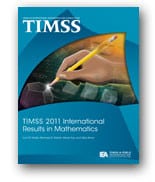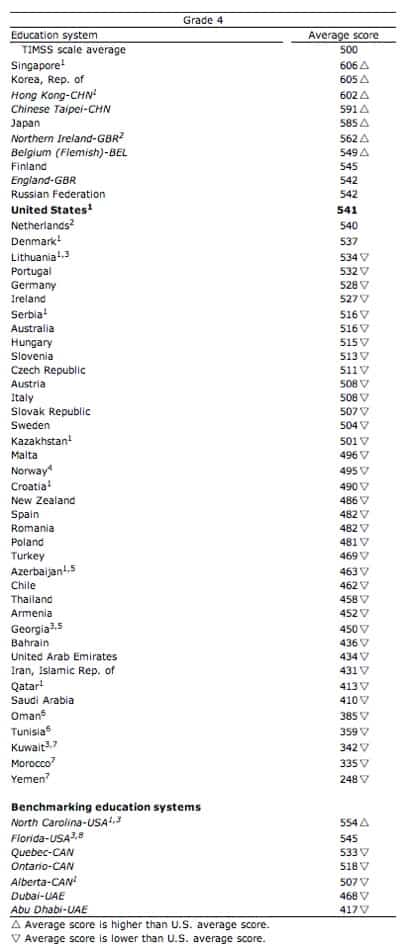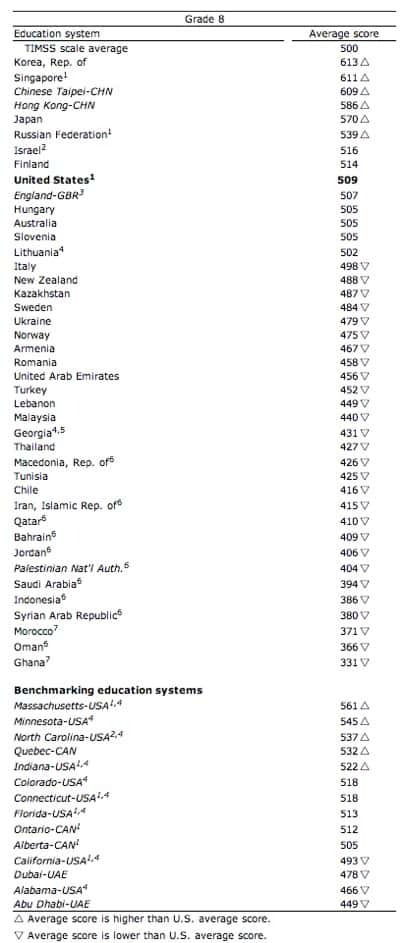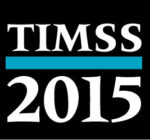 The 2015 Trends in Math and Science Study (TIMSS) results were recently published. Students in fourth and eighth grades from more than 40 countries worldwide participated in the most recent test. This test marks a 20-year span of comparative mathematics and science achievement data collected and once again East Asian countries topped the charts.
The 2015 Trends in Math and Science Study (TIMSS) results were recently published. Students in fourth and eighth grades from more than 40 countries worldwide participated in the most recent test. This test marks a 20-year span of comparative mathematics and science achievement data collected and once again East Asian countries topped the charts.
What does the TIMSS test?
The TIMSS tests students’ math and science knowledge. For the sake of this post, we are going to focus on mathematics. Both content domains (Number, Geometry, and Data) and cognitive domains (Knowing, Applying and Reasoning) are tested every four years. Student achievement is then compared to other participating countries. Singapore’s students once again ranked number one in the world, marking the fifth time Singapore has scored highest on the TIMSS since the country first participated in 1995. Students in the United States trail students in Singapore by 79 points for fourth grade and 103 points for eighth grade.
TIMSS Results for Select Countries – Fourth Grade Mathematics
| 1995 | 2003 | 2007 | 2011 | 2015 | |
| Singapore | 625 (1) | 594 (1) | 599 (2) | 606 (1) | 618 (1) |
| Hong Kong-SAR | 587 (4) | 575 (2) | 607 (1) | 602 (3) | 615 (2) |
| Republic of Korea | 611 (2) | 605 (2) | 608 (3) | ||
| Chinese Taipei | 564 (4) | 576 (3) | 591 (4) | 597 (4) | |
| Japan | 597 (3) | 565 (3) | 568 (4) | 585 (5) | 593 (5) |
| Russian Federation | 532 (9) | 544 (6) | 542 (9) | 564 (7) | |
| England | 513 (16) | 531 (10) | 541 (7) | 542 (9) | 546 (10) |
| United States | 545 (11) | 518 (12) | 529 (11) | 541 (11) | 539 (14) |
| Average* | 529 | 545 | 500 | 500 | 500 |
* International Average in 1995 and 2003, Scale Average since 2007
How challenging are the questions?
The questions on the TIMSS can be broken down into four levels, or benchmarks; Advanced, High, Intermediate and Low. The examples below are from fourth-grade problems.
A low-level question tests basic mathematical knowledge:
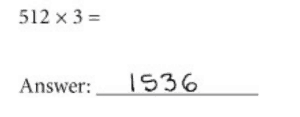
Percentage of students able to answer a low-level question: 99% Singapore, 98% U.S.
An intermediate level question tests the ability to apply basic mathematical knowledge in simple situations:

Percentage of students able to answer an intermediate level question: 93% Singapore, 79% U.S.
A high-level question tests the ability to apply mathematical knowledge and understanding to solve problems:
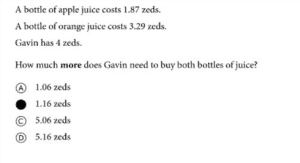
Percentage of students able to answer a high-level question: 80% Singapore, 47% U.S.
An advanced level question tests the ability to apply knowledge and understanding in a variety of relatively complex situation and to explain mathematical reasoning:
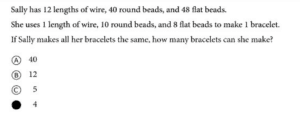
Percentage of students able to answer an advanced level question: 50% Singapore, 14% U.S.
To sum it up, students in the U.S. are really good at solving basic computation questions but struggle with applying their knowledge to solve problems in high and advanced level questions.
For more information about the TIMSS and a complete report, visit http://timssandpirls.bc.edu/timss2015/.
How does Singapore do it?
In a nutshell, a Singapore Math curriculum focuses on deep conceptual understanding and problem-solving with an emphasis on the “why” over the “how” of math. Concepts are introduced, practiced to mastery and immediately applied to solve both familiar and novel problems. Students are given ample time to grapple with problems to find multiple solutions which develops flexibility with numbers and logical thinking.
In contrast, traditional curricula in the U.S. has tended to focus on memorization and procedures. “Ours is not to reason why; just invert and multiply.” Math has been taught as a series of steps to follow to tackle what appear to be unrelated concepts. Many concepts are taught per grade level with little time to practice and master before moving on to the next concept; often referred to as a spiraling curriculum. This limits deep mathematical understanding.
What can we do?
There’s still hope. There are a few curricula in the U.S. that follow the Singapore math approach to deepening mathematical understanding and problem-solving. You can read more about Primary Mathematics and Math in Focus here.
If you are not in a position to change your curriculum, you can integrate some of the best strategies from Singapore into your current curriculum. Take time to teach basic concepts to mastery, focus on developing number sense with mental math activities and help students to visualize word problems with bar modeling.
Each year more and more schools, school districts and home-schooling parents are making the switch, but just buying new textbooks is not enough. Professional development and teacher training is an often overlooked piece of the puzzle. (That’s where Math Champions comes in. For information on how we can help you use Singapore Mathematics, please complete the form or send us an email.)
[contact-form to=’cassy@mathchampions.com’ subject=’TIMSS Post Help’][contact-field label=’Name’ type=’name’ required=’1’/][contact-field label=’Email’ type=’email’ required=’1’/][/contact-form]
Source: TIMSS 2015 International Results in Mathematics. Copyright © 2016 TIMSS & PIRLS International Study Center, Lynch School of Education, Boston College, and
International Association for the Evaluation of Educational Achievement. All rights reserved.
